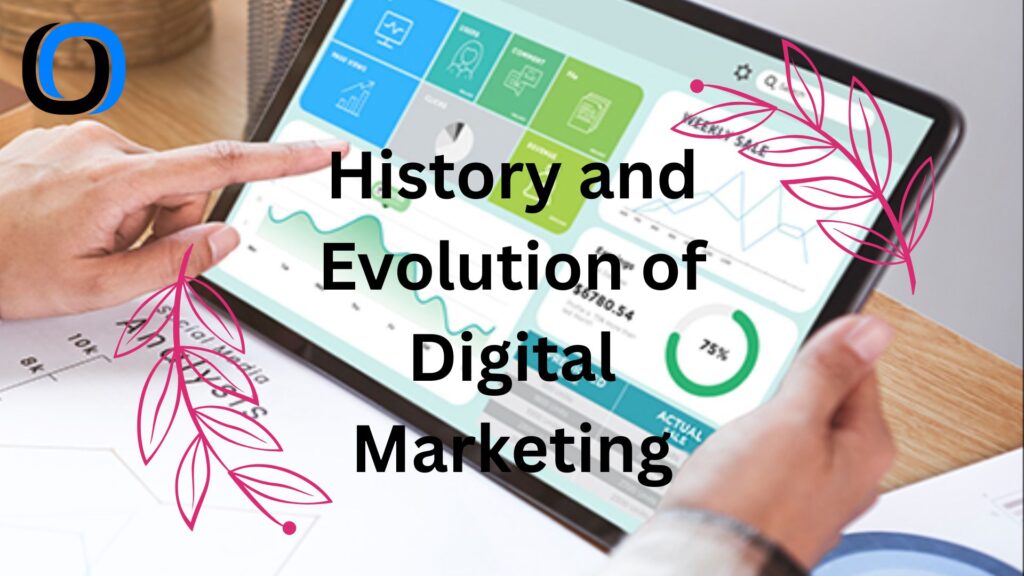
Introduction
Digital marketing has transformed the way businesses reach and interact with their audience. With the growing popularity of the internet and technological advancements, marketing strategies have evolved from traditional methods to modern, data-driven, and targeted approaches. To truly understand this transformation, we must explore the history of digital marketing, its journey through different phases, and how it became an essential part of today’s business world.
The Birth of the Internet and the Rise of Digital Marketing
The history of digital marketing can be traced back to the 1990s with the emergence of the internet. In the early years, digital marketing was limited to simple websites and email marketing campaigns.
The first clickable web ad was launched by AT&T in 1994, marking the beginning of internet advertising.
The Dot-Com Boom and Search Engine Era
The mid to late 1990s saw the rise of search engines like Yahoo! (1994), Google (1998), and MSN. These platforms changed how people accessed information and how businesses marketed their products. Search engine optimization (SEO) became an important part of marketing strategies as companies tried to rank higher in search results.
The history of digital marketing advanced rapidly during the dot-com boom. Banner ads, pop-ups, and email newsletters became common marketing tools. Though some of these practices were annoying to users, they laid the groundwork for future innovations.
The 2000s: Social Media and Mobile Marketing
These platforms revolutionized communication and brand engagement. For the first time, businesses could interact directly with consumers in real-time.
With the release of smartphones and increased mobile internet usage, marketers began optimizing content for mobile users. During this period, Google AdWords (now Google Ads) and Facebook Ads were launched, giving advertisers highly targeted advertising options. Pay-Per-Click (PPC) advertising became a powerful tool for businesses to reach specific audiences with measurable results.
The Rise of Content and Influencer Marketing
As users became more aware and selective about the content they consumed, brands shifted towards content-driven strategies. Blogs, infographics, videos, and eBooks gained popularity as they provided valuable information while subtly promoting a product or service.
The history of digital marketing took another turn with the rise of influencer marketing. Social media influencers with a large following began collaborating with brands to promote products in an authentic and relatable way. Platforms like Instagram and YouTube became powerful channels for influencer campaigns.
This era also emphasized the importance of user-generated content and customer reviews, as buyers started trusting peer opinions more than traditional ads.
The Data-Driven Revolution
With tools like Google Analytics, marketers began analyzing user behavior in depth. Personalization became a key focus. Companies started tailoring their messages and offers based on user demographics, interests, and online activity.
The introduction of marketing automation tools allowed businesses to streamline their campaigns. Email drip campaigns, automated social media posts, and retargeting ads improved efficiency and ROI.
The history of digital marketing was now being shaped by artificial intelligence (AI) and machine learning, which made it possible to predict customer behavior, improve user experience, and drive better conversion rates.
Current Trends and the Future of Digital Marketing
Today, digital marketing is more diverse and dynamic than ever before. Voice search, chatbots, AI-driven personalization, and augmented reality are shaping the next phase. Brands now focus on building trust, transparency, and strong customer relationships through meaningful content and ethical practices.
The increasing use of short-form video content (like reels and TikToks), interactive marketing, and influencer collaborations continues to evolve the field. Data privacy and regulatory compliance (such as GDPR) have also become crucial aspects of modern digital marketing.
Looking ahead, the history of digital marketing will continue to evolve as new technologies emerge. The future may bring even more immersive experiences through the Metaverse, virtual reality (VR), and further AI integration.
Conclusion
The history of digital marketing shows how the industry has continuously adapted to changes in technology and consumer behavior. From the early days of email campaigns and banner ads to today’s sophisticated AI-powered strategies, digital marketing has become a vital component of business success.
As technology continues to advance, one thing is certain: digital marketing will keep evolving. For marketers, staying updated with trends and focusing on delivering value to customers will be the key to long-term success in this ever-changing digital landscape.





